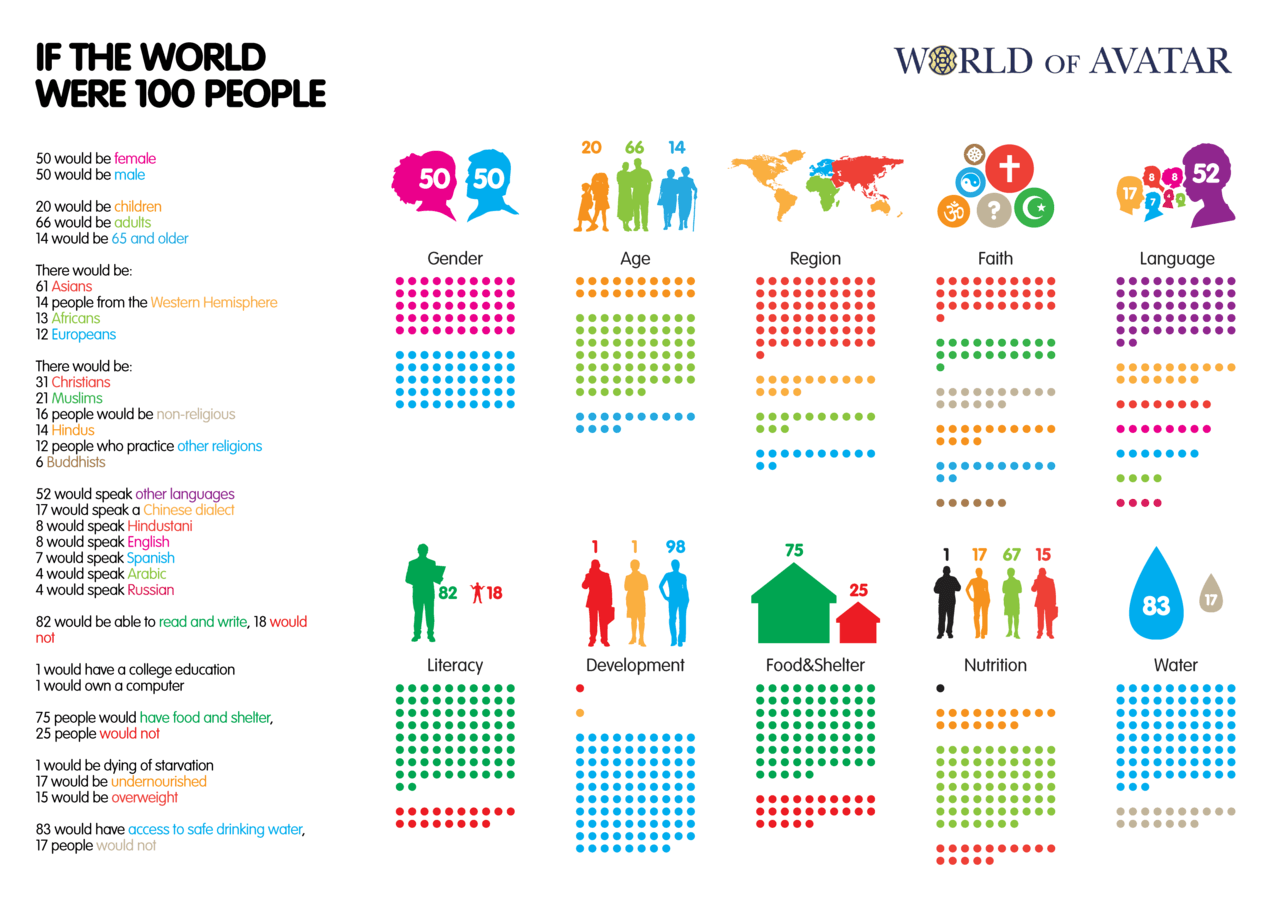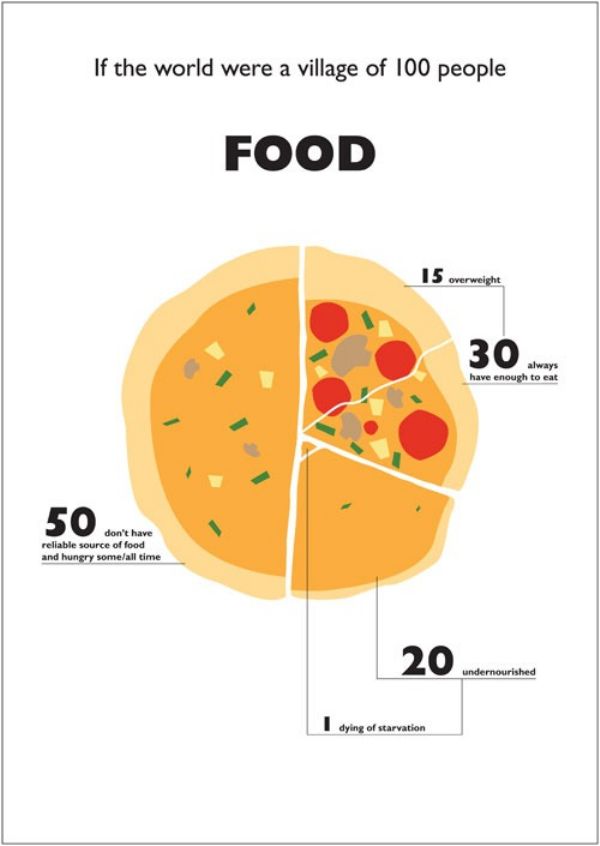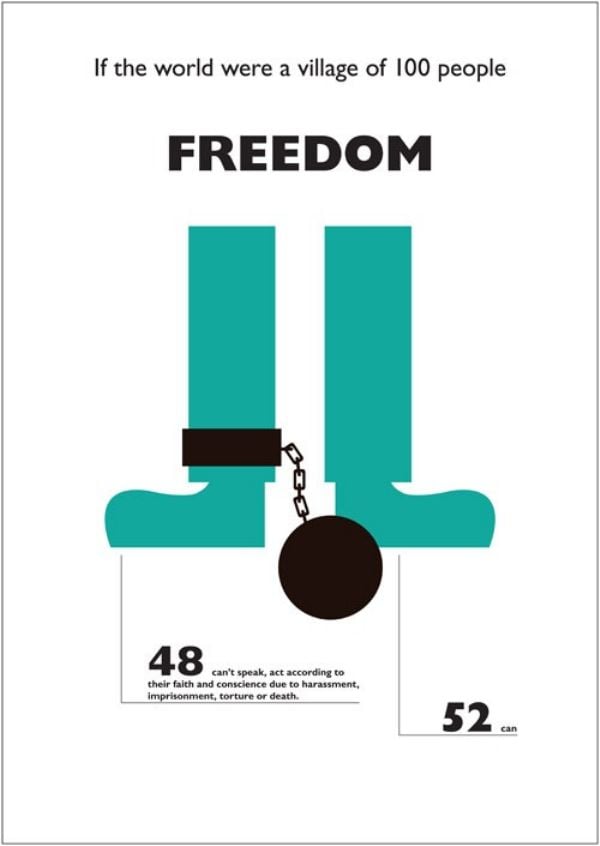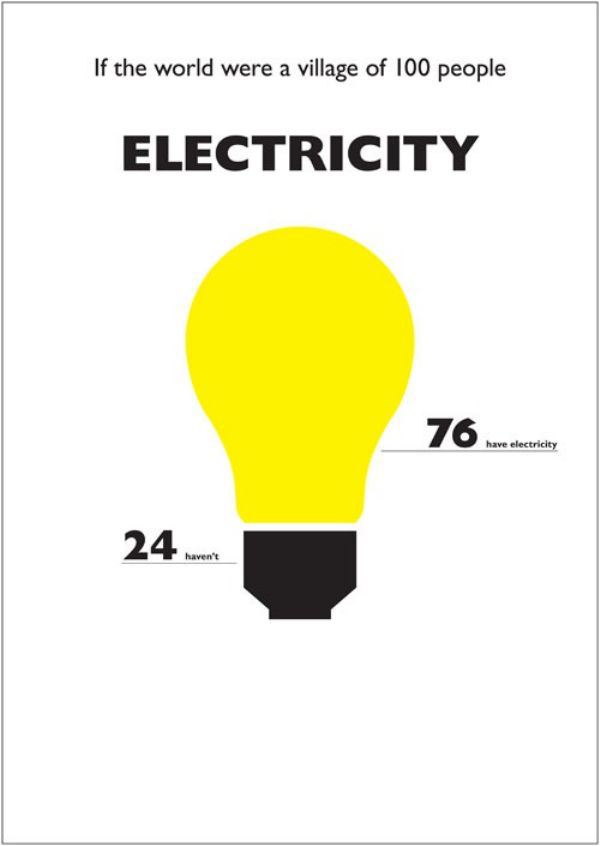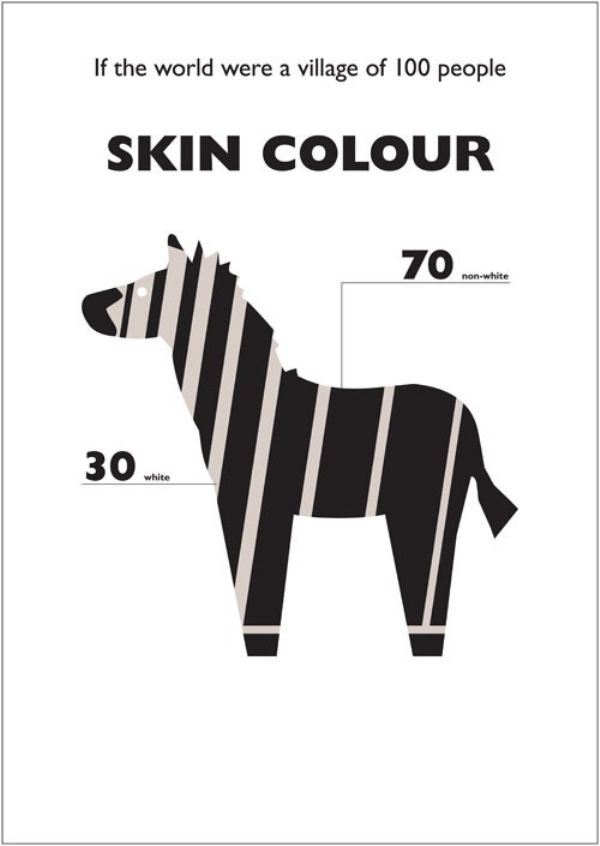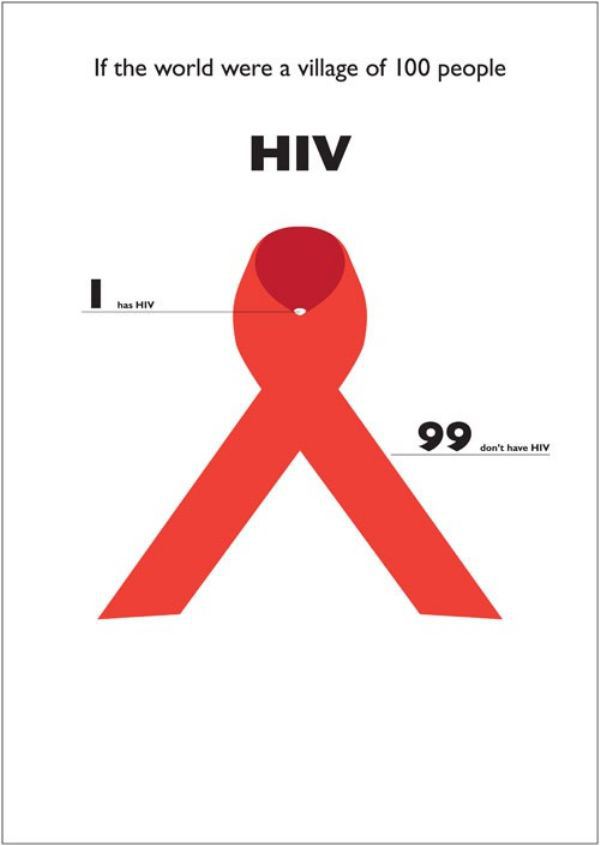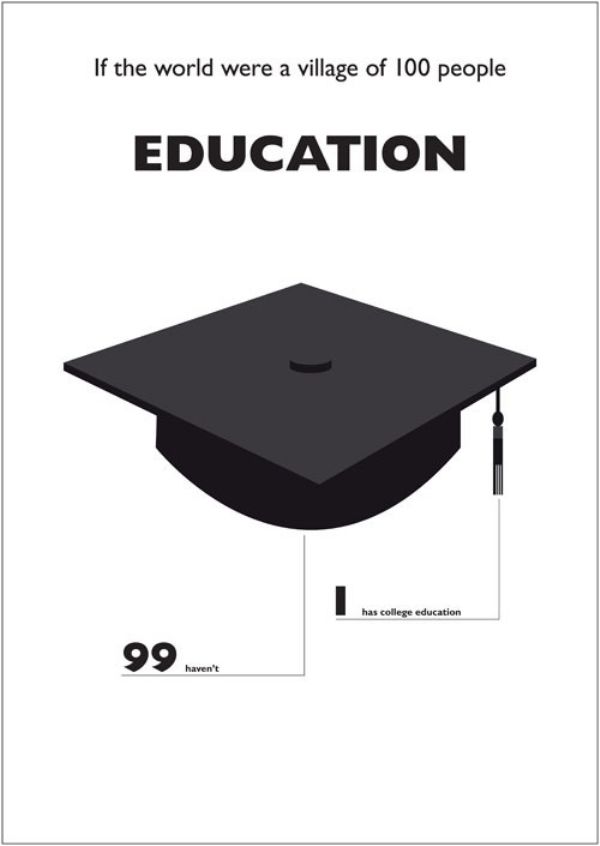Increasing connectivity, technology, and global awareness have made it easier than ever to observe the state of our globe. As we move forward in our ability to calculate and explore, so does our talent for discovering ourselves. Unsurprisingly, the way society works in some places in the world differs drastically from others. Though this data shows troubling inequalities, the only way to overcome difficulties is by properly understanding them first. By boiling down statistics across the world to percentages out of 100, it’s more simple to internalize the triumphs and struggles across humanity. If the world had just 100 people, the globe would still be an abundantly varied place.
One of the most basic needs, food, is an inequality everyone should be concerned with. Though a somewhat large portion of the world has access to food, many still don’t know where their next meal is coming from.
Additionally, an alarming number of people across the world live in societies that restrict basic freedoms, such as religion and free speech. When people in the developed world picture humanity, it is easy to forget how much work must still be done. With nearly half the globe living under threat of harassment or imprisonment, it is clear that standing up for others is more important than ever:
Not only that, electricity, another basic need, still remains a luxury for nearly a quarter of the world’s citizens. Though some may not think about electricity as a need, imagine what would happen to medical care, education, or the possibility of economic growth if there were no access to power.
On the other hand, cultures around the world are one of the most magnificent ways humanity is rich. Viewing the data as percentages out of 100 also allows us to see how racially diverse the world really is. With such variety in the world, it should be obvious why racism and racial profiling can be so detrimental.
Health is another area where the world is uneven. Since much of the developed world has some access to modern medicine, it’s easy to forget that most of the world does not. This is an especially troubling fact when trying to contain and defeat serious illness. In the case of HIV/AIDS, many drugs exist that allow sick patients to manage this infection and live a healthy, normal life. In the chart below, 1% may seem low, but it actually amounts to approximately 70 million people. Keeping in mind that much of the world does not have access to these relatively cheap treatments, such a large figure shows just how much we need to step up and aid those without help. Since tens of millions are affected by just this one disease, it puts the importance of disease control, research, and prevention in perspective.
Finally, another crucial tool to moving forward in the world is education. By viewing education inequality across the globe, it is clear how fortunate those of us in a position to be educated truly are. Not only that, global education inequality shows how important free education resources are, as well as increased technology to access these resources.
Though differences between us seem colossal, our basic needs and desires unite humans around the world. Growing technological and scientific advances make it more clear than ever that in order to move humanity forward, we must first make efforts to bring support and opportunity to those without. By examining new data in creative ways, those of us with the potential to make a difference are more enabled to act. Though some of these problems take place far away from us, there are always ways to assist reputable charities, or help disadvantaged people in our own neighborhoods. What are some everyday ways you can bring assistance to those in need?
Learn more about these statistics here and here.

